Pr' Megvu
The pictures and description of the functioning of the 'black kitchen' were provided by Mateja from the Pr' Megvu farm, who still uses this same kitchen for drying meat and baking bread and other delicacies.
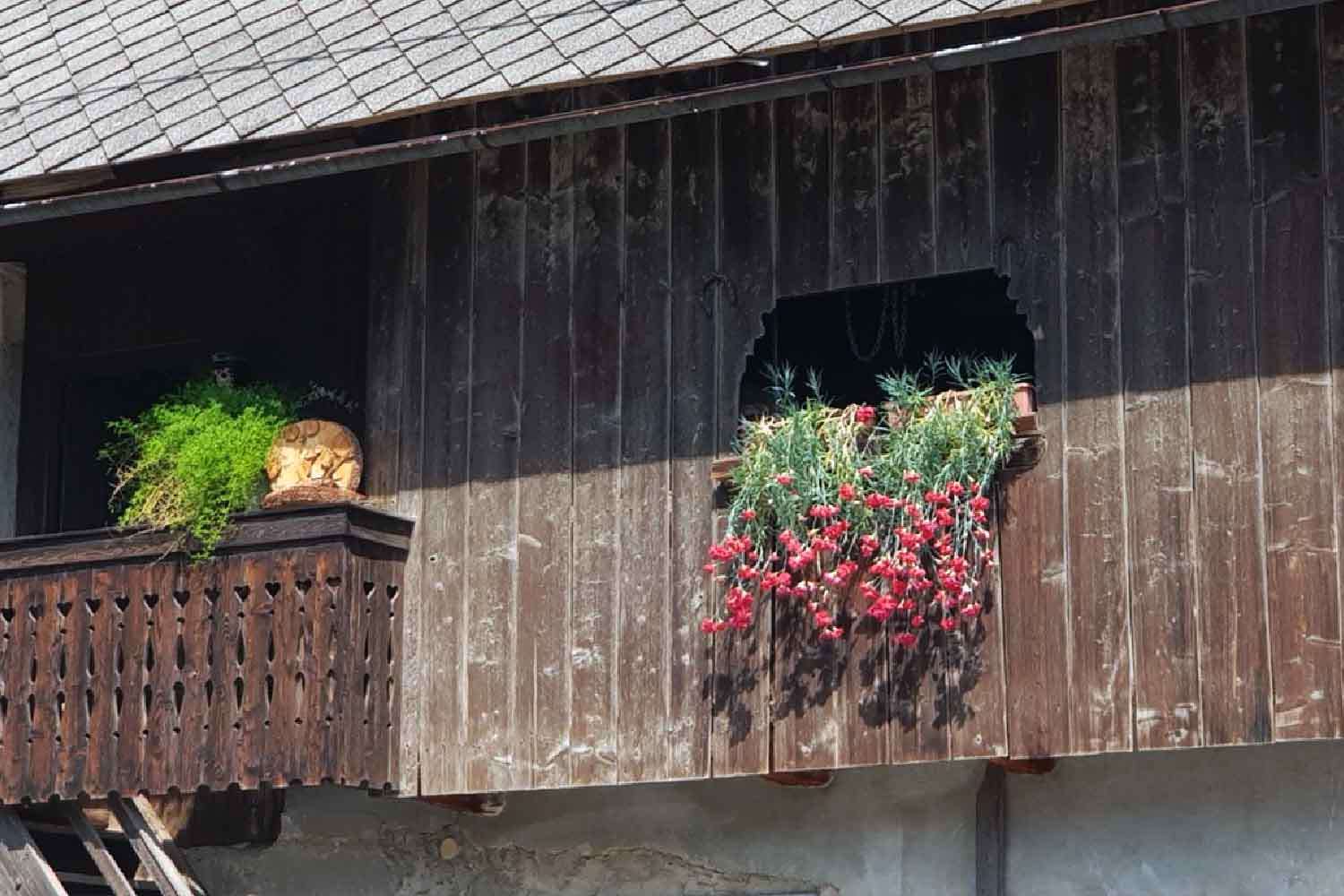 gank – a wooden balcony
gank – a wooden balcony
BLACK KITCHEN
The 'black kitchen' gets its name from its black walls and ceiling. As the smoke travels from the stove to the chimney through the kitchen, soot and tar leave traces on the surfaces. In the past, and even today, 'black kitchens' were mainly found on larger farms, as they were used for drying and smoking meat. The tiled stove, usually the only source of warmth in the house, was also operated from the black kitchen. Apart from heating, the tiled stove was also used for cooking, baking bread, and making traditional potica.
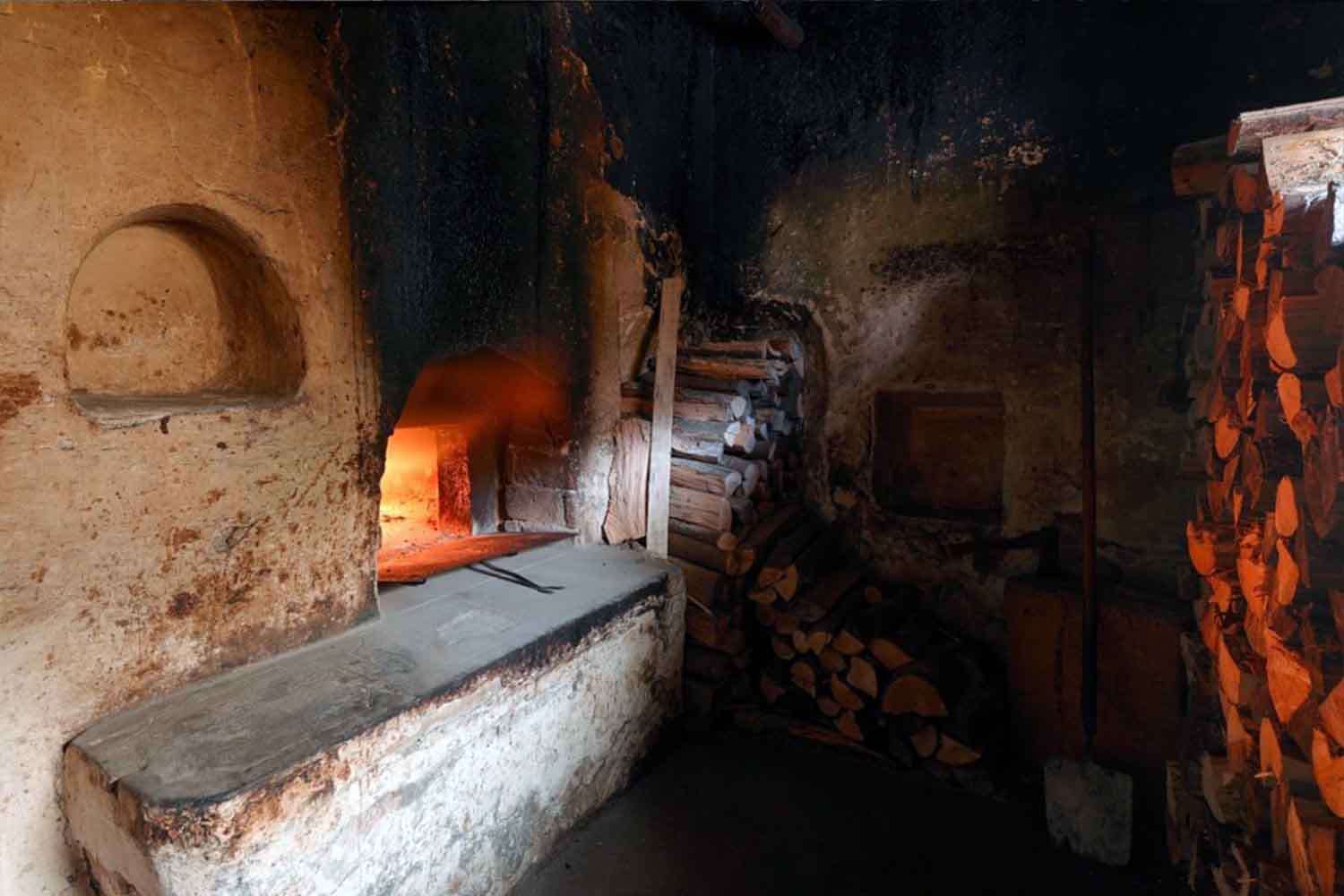 Black kitchen
Black kitchen
 Fireplace
Fireplace
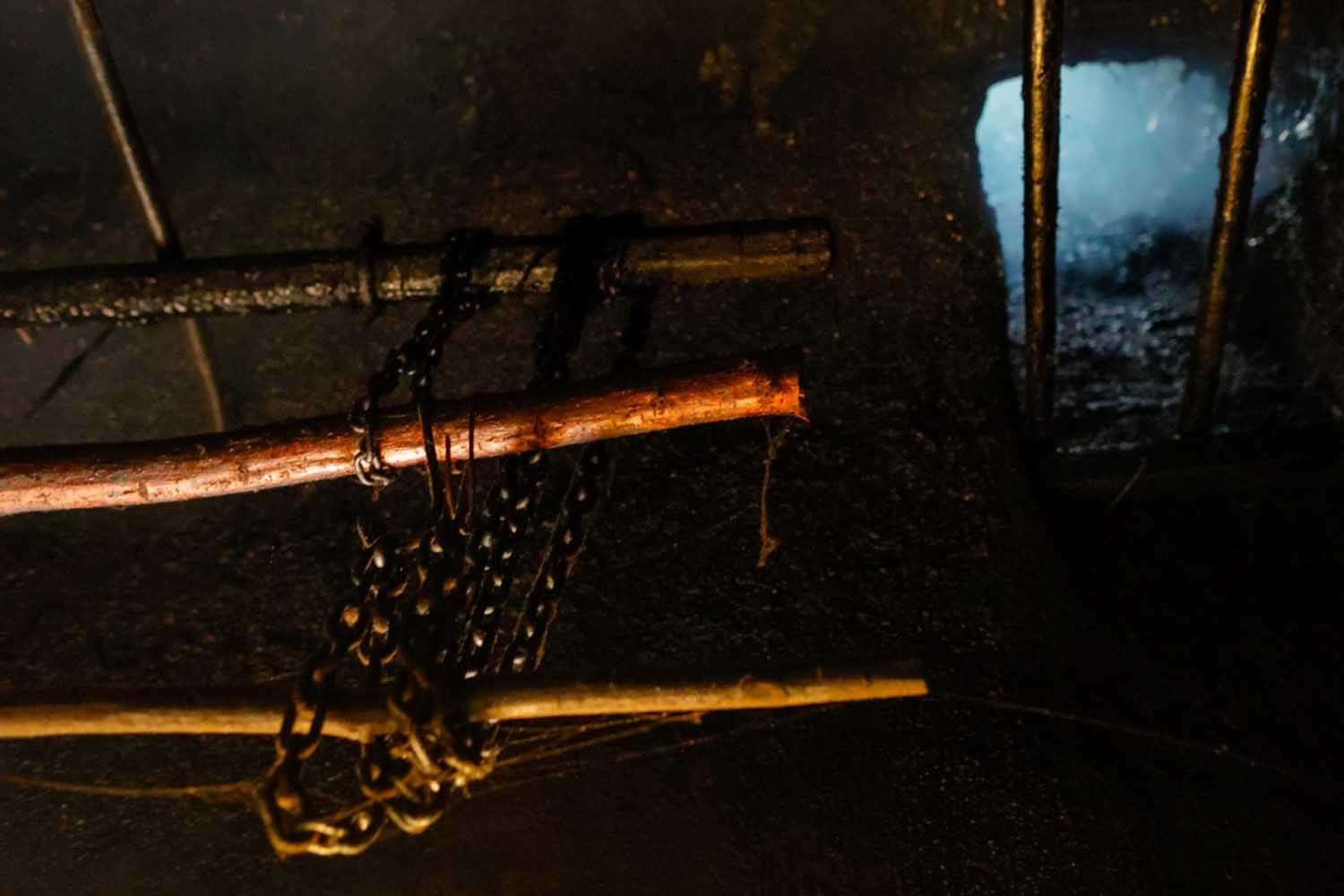 Ceiling, chimney, and ''rajžlji''
Ceiling, chimney, and ''rajžlji''
The main difference between a 'black kitchen' and a smokehouse is that the latter is used exclusively for drying and smoking meat, whereas black kitchens are multifunctional.
They were mainly used during the winter months when the tiled stove heated the house. However, at Pr’ Mgvov, cooking and baking took place in the 'black kitchen' all year round. The smoke from the stove traveled through the kitchen and then exited through a chimney on its opposite end, drying and smoking meat delicacies hung on rods ‘’rajžlji’’ hooks. Sausages were dried in 3 to 4 days, bacon took an extra day, and larger cuts of meat required more time, depending primarily on their size. Smoking meat is a complex task that requires a lot of experience: the smoke should not be too hot or too cold, the burning fire must be clean, without excessive soot, and smoke should circulate properly to envelop all the delicacies hanging under the ceiling.
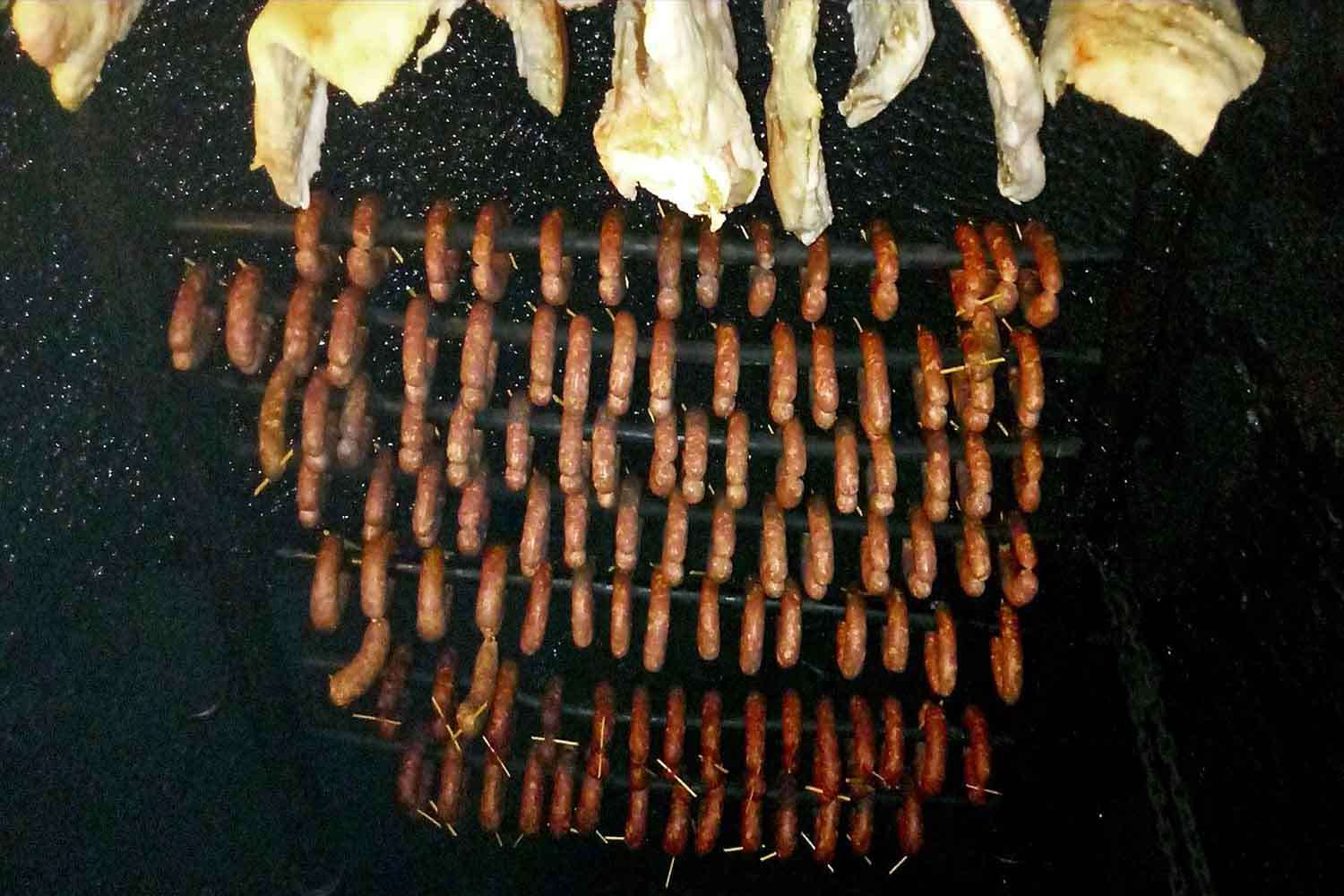 Drying meat
Drying meat
BAKING BREAD
To bake bread, the tiled stove needed to be well heated, which took quite some time. Meanwhile, the housewife would knead the dough in mentrga, and then let it rise in proofing baskets. The mentrga is a special table — when the top cover is removed, it reveals a compartment designed for kneading large amounts of dough, as bread was typically baked in larger quantities, often enough for an entire week.
Once the wood burned down, the housewife cleaned the hearth with a rake and then swept it thoroughly with an ash broom. She would then turn the risen dough out from the basket onto a wooden paddle and place it into the oven. This process was repeated until all the loaves were in. The oven opening (žekna) was then sealed with a metal cover. When the bread was baked, the housewife took it out with a paddle, brushed off any remaining ash with a small broom, and the freshly baked bread was ready to be tasted. Tasting the still-warm bread was the highlight of the day for the children, as it was one of the best treats they got.
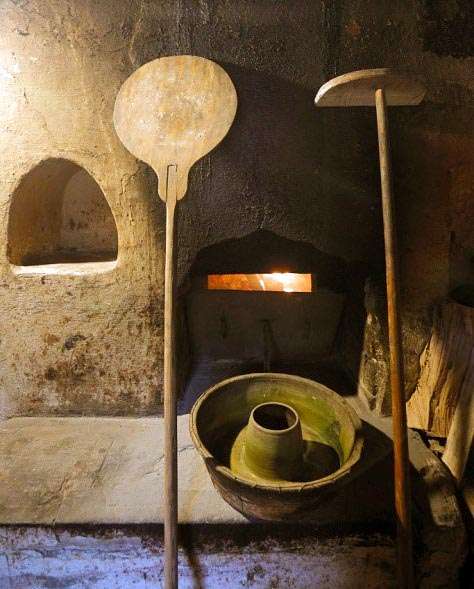 Wooden paddle, rake, clay potica mold ''kovač''
Wooden paddle, rake, clay potica mold ''kovač''
 Bread proofing baskets
Bread proofing baskets
 Freshly baked bread
Freshly baked bread
ONE-POT DISHES
Soups and stews and other one-pot dishes were cooked in clay pots wrapped in wire, which protected the pot from uneven overheating and cracking, and let the housewife tend to other chores without having to constantly supervise the fire. The pots were placed in the oven using burkle, special long-handled forks that could grasp the pot, allowing it to be lifted and pushed in or out of the oven. Potica was baked in a clay mold, either referred to as a modl, rena, or kovač, which gave potica its characteristic ring-like shape.
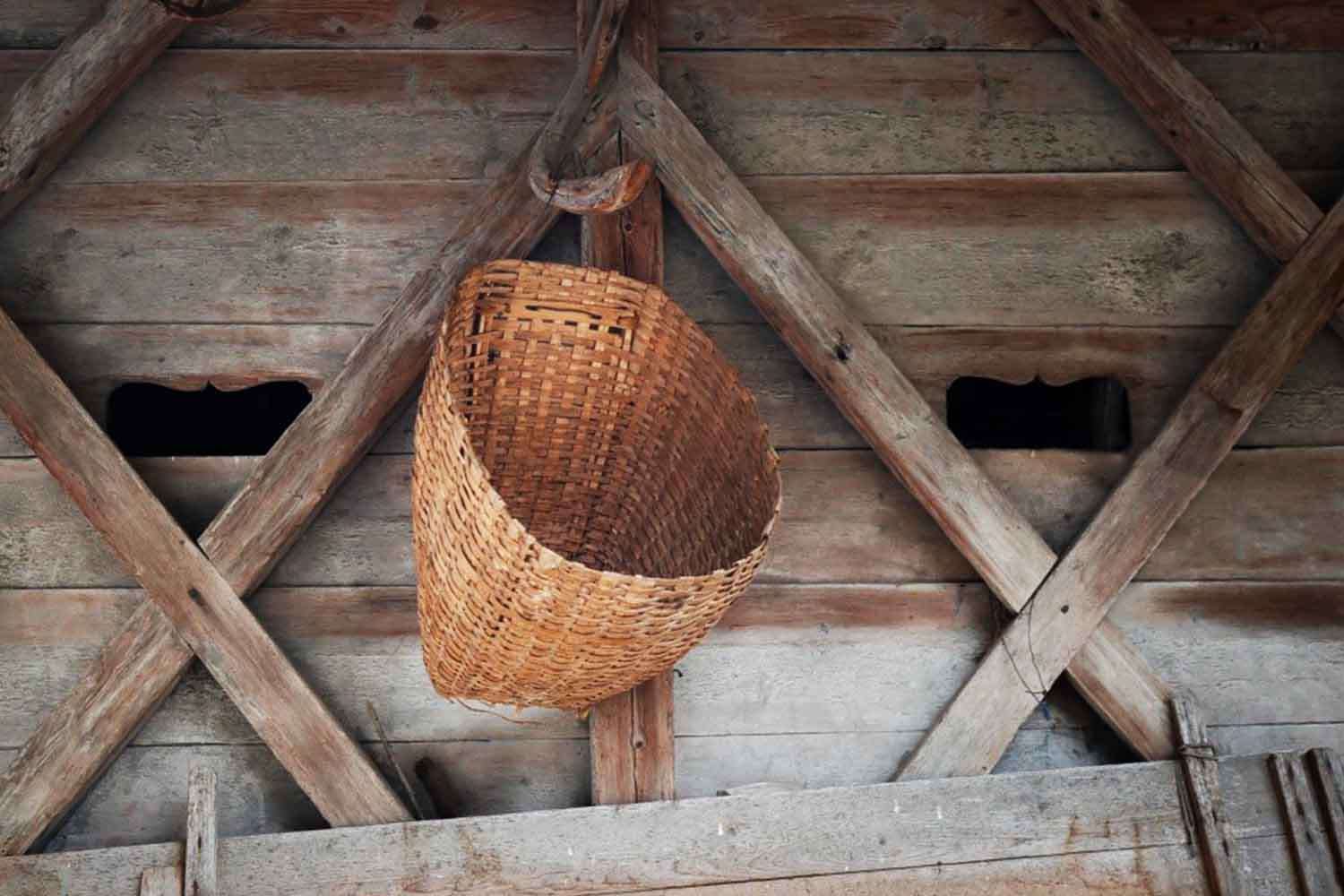
Unfortunately, there are only a few ‘black kitchens’ left in the village, and the knowledge of how to dry and cook food in a ‘black kitchen’ is even more of a rarity, which makes it even more important to preserve at least what is left for future generations.


